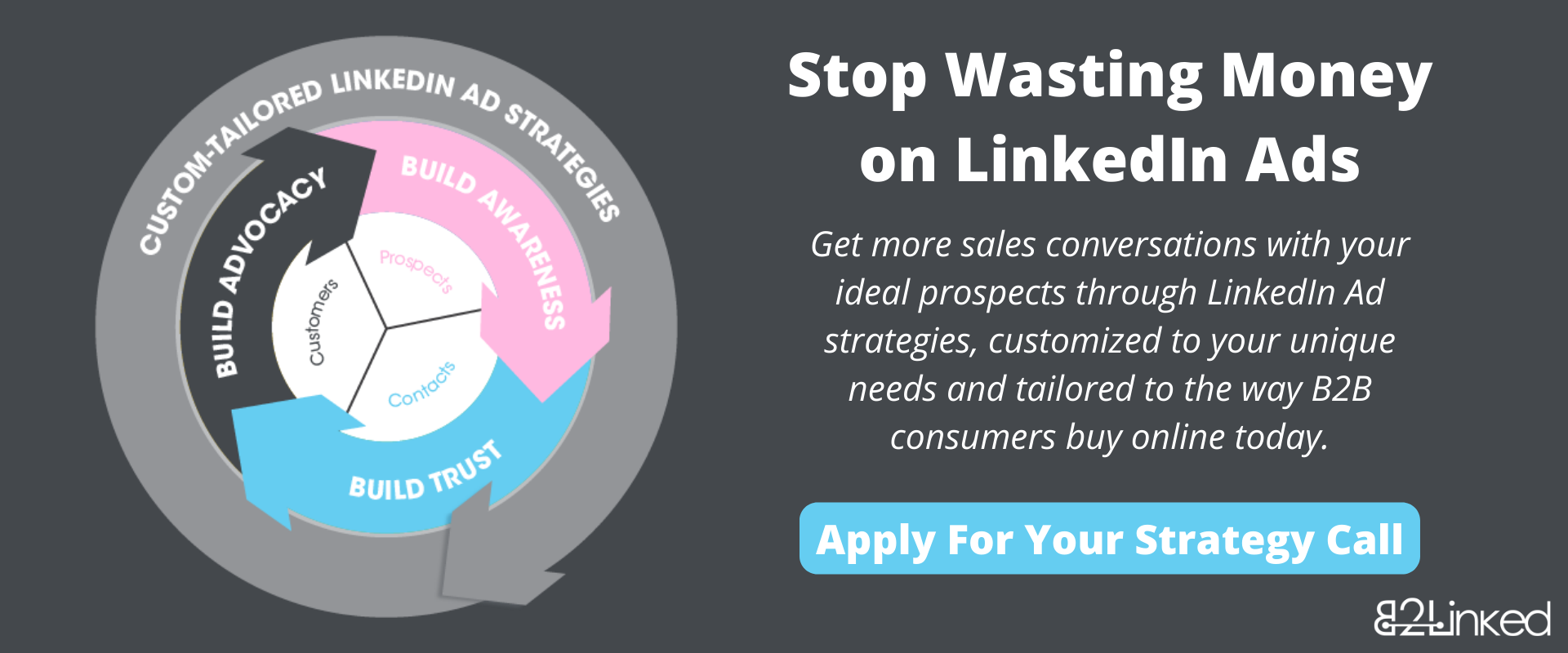
LinkedIn Audience Expansion: Why It's Not Good For Brand Awareness


About a month ago, we shared a post about LinkedIn Audience Expansion and why we often discourage advertisers from using it.
We even wrote a nice haiku about it:
Shows my ads to those
outside defined targeting.
That’s dumb. Really dumb.
Despite having taught this principle for 11 years now, we were surprised to see comments from both ends of the spectrum: those who were strongly against using Audience Expansion and those who were in support of it.
Those who were in support of Audience Expansion defended the feature by explaining that we as advertisers need to promote our products and services, whether our audience is in the market or not.
Essentially, we need to build brand awareness.
This is a true statement. We need to advertise to people, whether they’re ready to buy from us or not. Once your audience is in the market, they’ll likely buy from you because you’ve invested the time and money to build affinity with them.
However, those that brought up this argument (as valid as it is) still do not understand the functionality of Audience Expansion.
It’s crazy for us to think that this subject merits its own blog post, but we need to be clear about what this feature is. Our goal in writing this post is to help others understand Audience Expansion so they know full well what to expect when they enable it (or forget to disable it).
We feel we would be doing the digital advertising community a disservice by not raising our voice about it. So, without further ado, let’s dive in.

WHAT IT IS AND WHAT IT ISN’T
As we mentioned in our haiku, Audience Expansion extends your reach to those outside the targeting parameters you’ve defined in your LinkedIn Ad campaign.
On the same post we referenced earlier, we had one commenter say that they’d seen audience demographics from campaigns with Audience Expansion enabled where the target was supposed to be IT executives, but instead saw titles related to nursing and education. This paints the picture pretty clearly.
This is why the argument that advertisers need to show ads to those who aren’t ready to buy yet doesn’t hold much weight here. It’s not so much that Audience Expansion extends your reach to those who aren’t in the market right now, but that fit within your ideal customer persona (ICP), it’s that it extends your reach to those who don’t fit within your ICP at all.
There’s definitely a difference between those who simply aren’t ready to buy and those who would never buy because they’re not an ideal customer.
IT’S NOT ABOUT REACH AND AWARENESS, IT’S ABOUT CONTROL
The idea of extending our reach to those outside our ICP wouldn’t be so bad if we had control over who we extended our reach to.
When building brand affinity and awareness, it makes sense to promote ads to those outside your ICP from a strategic standpoint.
For example, you might consider targeting both the end user of your product or service while also simultaneously targeting the rest of the buying committee. If there are more people at a company than just your ICP that have influence over whether your product/service is purchased, you want to make sure you’re advertising to them, too.
The problem, though, is that it’s unclear who exactly is seeing your ads when Audience Expansion is enabled.
Building brand awareness by extending your reach outside your ICP is something we would highly encourage, but enabling Audience Expansion is not the way to do it.
Instead, build additional campaigns that target the audiences you want. Be strategic about who you choose to show your ads to, rather than leaving it to chance.
BACK TO THE BASICS
It’s a marketing fundamental that you want to have a clearly defined audience to market to. It’s a complete waste of ad budget to advertise to anybody and everybody, which is exactly what happens when Audience Expansion is enabled.
This feature muddies your targeting in ways that are unclear. You may as well put up a billboard (at least with a billboard you can be strategic about where you place it). Or just not define your targeting at all when setting up a LinkedIn Ad campaign. Either way, you’re using your targeting in a way that limits your control.
The main takeaway is this: If you know who would make a great customer for you and have a clearly defined persona (whether they’re in the market or not), uncheck Audience Expansion. You can focus your ad dollars on those who would actually benefit from seeing your ads.
If you want to expand your reach to those outside your ICP, just do it manually so you can be strategic about it and maintain control over who you advertise to.
On the topic of brand awareness, what tactics or strategies have worked well for you when running LinkedIn Ads? Comment below!
And if you want to get more sales opportunities with your ideal prospects but don’t have the time or motivation to manage LinkedIn Ads yourself, book a discovery call today. We’ll help you build, execute, and manage a LinkedIn Ads strategy custom-tailored to your unique needs.
Written by Eric Jones
